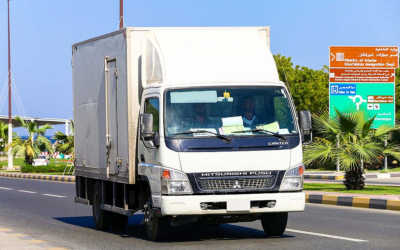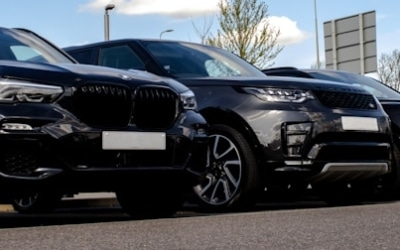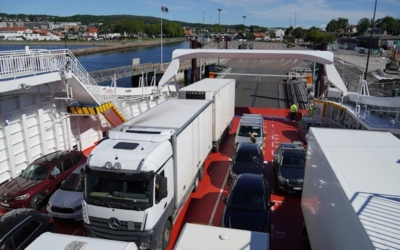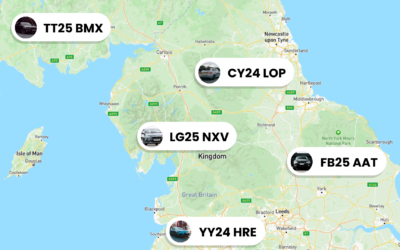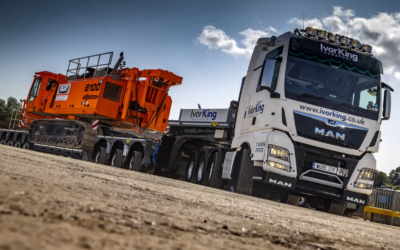Fleet Cybersecurity Guide for IT & Operations Leaders
Protecting connected vehicles, telematics and driver systems is no longer optional. This guide gives fleet managers a practical, no‑nonsense approach to fleet cybersecurity, with clear steps you can implement today to reduce risk and keep operations moving.
Why Fleet Cybersecurity Matters
As a fleet manager, you’re responsible for safety, uptime and customer service. Increasingly, those outcomes depend on digital systems: telematics boxes, driver apps, remote diagnostics and cloud platforms. That interconnectedness creates attack vectors that weren’t a concern a decade ago. Fleet cybersecurity is about protecting those systems so vehicles stay safe, schedules remain reliable and sensitive data stays private.
Threats against fleets range from device tampering and unauthorised telemetry access to ransomware that can halt depot operations. The consequences are tangible: vehicle downtime, regulatory penalties, reputational damage and even physical safety risks. Investing in practical cybersecurity reduces these risks and protects the day‑to‑day operations you manage.
Why act now: insurers and regulators are paying attention, and customers expect continuous service. Treat security as an operational discipline—one that safeguards routes, drivers and revenue.
Threat landscape for fleets
The threat landscape is diverse. Attackers target telematics units for data theft or to inject false readings, exploit mobile apps used by drivers, or use compromised third‑party vendors to pivot into your systems. Ransomware and supply‑chain risks are rising. Recognising common attack patterns helps you prioritise defences.
Business impact and regulatory considerations
A breach can disrupt deliveries, force expensive emergency repairs, or expose customer and employee data. Depending on your region and sector, you may also face reporting obligations. Framing cybersecurity as business continuity rather than an IT-only issue makes it easier to secure budgets and leadership support.
Quick Fleet Cyber Risk Assessment
You don’t need a SOC to start reducing risk. A quick, structured assessment reveals the biggest exposures and where to act first. Spend a day or two walking through the steps below with your IT and operations colleagues; you’ll come away with priority actions you can implement within weeks.
Inventory your assets and attack surface
Begin by cataloguing every connected asset: vehicles with telematics units, dash cameras, driver smartphones, depot Wi‑Fi, cloud services and integrations. Include firmware versions and vendor details. This inventory is the backbone of any sensible fleet cybersecurity effort because you can’t secure what you haven’t listed.
Prioritize risks and critical routes
Score assets by impact and likelihood: which vehicles carry high‑value loads, operate in sensitive areas, or run critical routes? Prioritise those for immediate controls—segmentation, stricter authentication or monitoring—so you get the biggest risk reduction for the least effort.
Practical Security Controls for Fleet Operations
Controls should be pragmatic and operationally friendly. Focus on measures that reduce risk without harming driver productivity: hardening devices, securing networks, and keeping apps and cloud systems properly configured.
Telematics and device hardening
Start with vendor settings: disable unused services, enforce encrypted communications, and require strong authentication for device management. Implement a documented firmware update process so devices receive patches promptly. Where possible, choose telematics providers that support secure boot, signed firmware and tamper detection. If you use dash cameras, ensure those streams are encrypted and access‑controlled — Traknova’s resources on Dash Cameras can help inform your selection.
Network and connectivity controls
Segment vehicle networks from corporate networks and public Wi‑Fi. Use VPNs or secure APN configurations for cellular communications and firewall rules to limit outgoing connections. At depots, avoid putting vehicle systems on the same Wi‑Fi as guest or administrative devices. These simple steps significantly reduce the chance an attacker pivots from a compromised phone or laptop into vehicle systems.
Application and mobile security
Driver apps should employ multi‑factor authentication and follow secure development practices. Use Mobile Device Management (MDM) to enforce device encryption and prevent sideloading of unauthorised apps. Minimise the data collected by driver apps and provide a clear reporting channel so drivers can flag suspicious behaviour immediately.
Operationalizing Cybersecurity in Fleet Programs
Security is most effective when embedded into procurement, vendor management and daily operations. Make it part of your standard operating procedures so it outlives any single project or team member.
Policies, procurement and vendor due diligence
Include minimum security requirements in RFPs and contracts: encryption standards, incident notification timelines, and proof of secure software development. Conduct vendor security assessments and ask for third‑party audits or penetration test summaries. Insist on contractual rights to receive security updates and to terminate services if vendor practices are inadequate.
Incident response, monitoring and threat detection
Develop a simple incident playbook: how to isolate a compromised vehicle, who to notify and how to restore services. Implement logging and central monitoring (even a basic SIEM) to detect anomalies like unexpected telemetry patterns or mass device reboots. Traknova’s Fleet Cybersecurity blog contains practical monitoring suggestions you can adapt.
Training and driver-facing controls
Drivers are a frontline defence. Provide short, focused training on device hygiene, recognising phishing attempts and reporting suspicious behaviour. Simple rules—no USB devices from unknown sources, lock phones when not in use, report lost devices immediately—cut down many common incidents.
Want to see how this looks in practice? Book a personalised consultation or book demo with Traknova and we’ll walk you through secure telematics deployments, device hardening and monitoring tailored to your fleet. A short demo can quickly show where your greatest risks are and the practical steps to fix them.
Roadmap, Metrics, and Continuous Improvement
Security is a programme, not a project. Build a phased roadmap with measurable milestones and track a handful of metrics to show progress and ROI. That makes it easier to secure ongoing funding and keeps attention on the highest‑impact activities.
Implementation roadmap and quick wins
Organise your work into 90‑day, 6‑month and 12‑month horizons. Quick wins in the first 90 days include completing an asset inventory, enforcing MDM policies, and segmenting networks at one depot. Six‑month goals can include vendor contract updates and centralised logging; 12 months can cover advanced monitoring and automated patching. These phased steps demonstrate momentum and reduce risk incrementally.
Key metrics and reporting
Track a concise set of KPIs: number of internet‑exposed devices, patch cadence, mean time to detect (MTTD) and mean time to respond (MTTR) to incidents, and percentage of drivers trained. Report quarterly to senior leadership with trend lines showing reduced exposure and improved response times—this helps sustain investment in fleet cybersecurity.
Conclusion and Next Steps
Cyber threats are a business reality for modern fleets, but they are manageable with pragmatic, operationally focused controls. Start with an inventory and risk prioritisation, apply device and network hardening, embed security into procurement and procedures, and measure progress with a few sensible KPIs. Taken together, these steps will materially reduce the chance of disruptive incidents and protect both people and assets.
Ready to make your fleet more resilient? Book a demo or consultation with Traknova to see a tailored security plan for your operation: book demo. If you prefer direct contact, Contact us and we’ll arrange a time that suits your schedule.
Frequently Asked Questions (FAQs)
How quickly can I reduce my fleet’s cyber risk?
You can achieve meaningful reductions within 90 days by doing an asset inventory, enforcing MDM, segmenting networks and patching high‑risk devices. These actions reduce many common attack paths.
Do I need a large budget to improve security?
No. Many high‑impact measures—policy updates, segmentation, MDM basics and driver training—are relatively low cost. Prioritise based on impact to get the most value from limited budgets.
Which systems are most at risk?
Telematics units, driver smartphones and third‑party integrations are frequent targets because they provide remote access and often lack rigorous patching. Focus there first.
How does Traknova help with fleet cybersecurity?
Traknova provides secure telematics solutions, monitoring capabilities and consultative services to help fleets implement the controls discussed here. To explore specific options, book demo or contact us.
Where can I learn more about related topics?
Read more about predictive maintenance and electrification to understand how integrated programmes reduce risk and cost: Predictive Maintenance for Fleets: From Data to Action and Fleet Electrification: Practical Roadmap for Managers.
Your feedback matters. If this guide helped, please share it with colleagues and on social media — it helps other fleet managers learn how to protect their operations. What’s the biggest cybersecurity challenge you face in your fleet today? Reply with your thoughts or contact us to continue the conversation.
If you’d like a tailored walkthrough, don’t forget to book demo with Traknova — we’ll show practical steps specific to your vehicles and operations.




